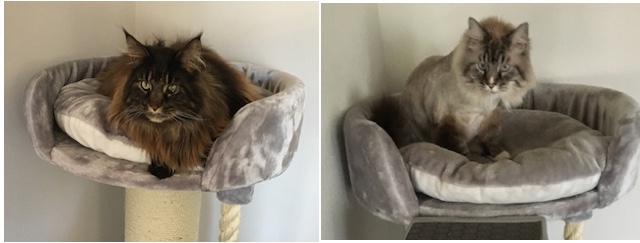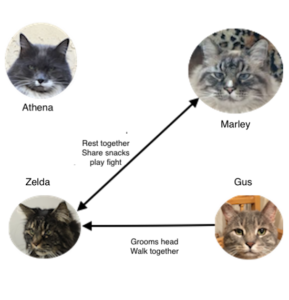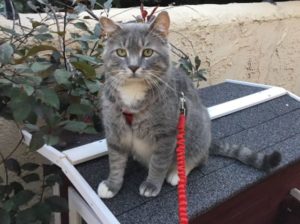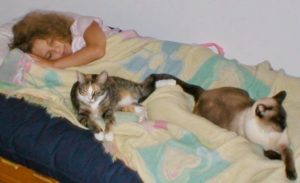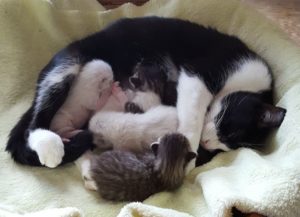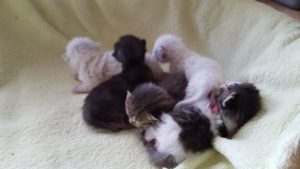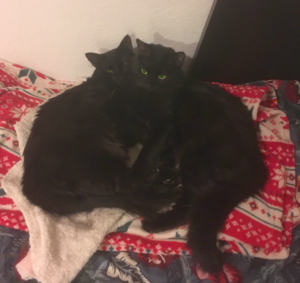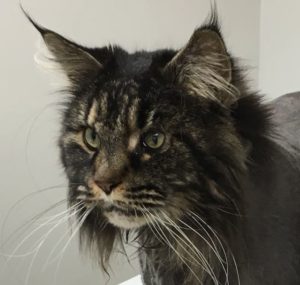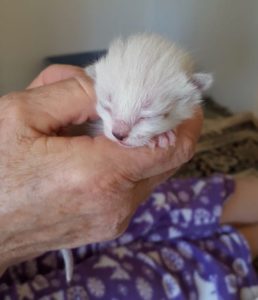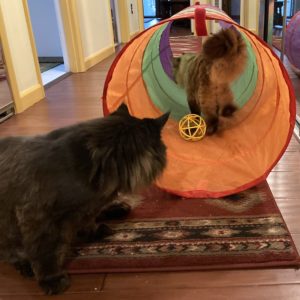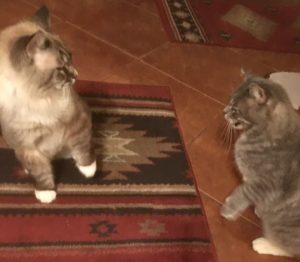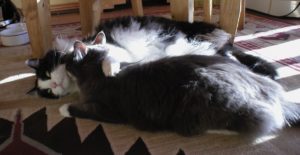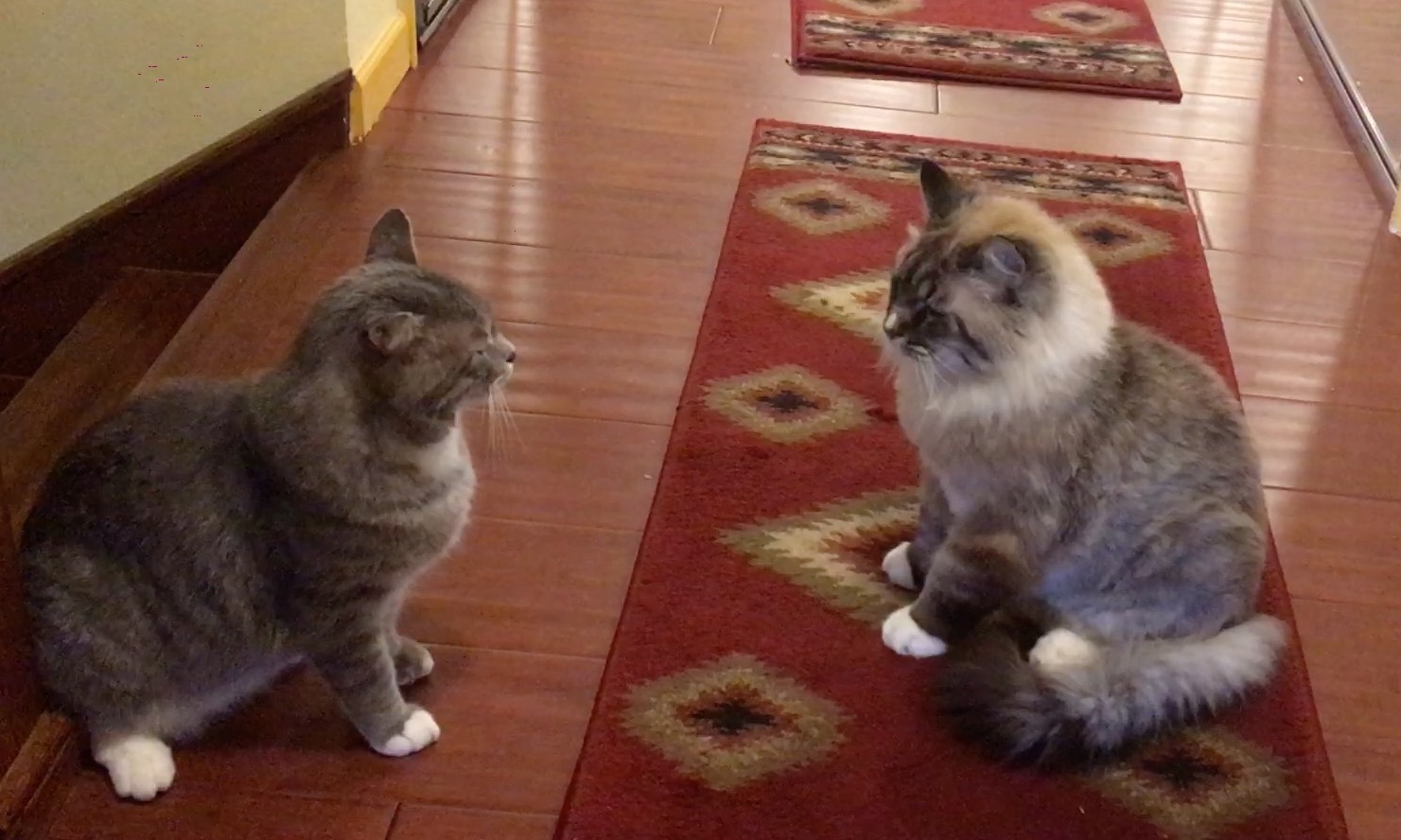
Do you have a cat that is picked on by your other cats? Everyone else seems to get along okay but this one cat seems to be singled out for torture. He or she does not fight back, just tries to slink away and hide. You may have heard the term pariah used for such a cat – a pariah is an outcast, someone who is not part of the general social group.
Often, one or more cats will pick on the “pariah”. These feline bullies may..
- stalk and track their victim
- stare directly at their victim
- attack her or him
- prevent the pariah cat from using critical resources – litter boxes, food, sleeping places.
- Bullies can exist within any multi-cat household – like human bullies, they tend to pick on the timid, old or sick that respond to threats.
Why should you intervene when cats don’t get along…
- The victim may develop a stress-related illness due to the constant threat presented by the bully.
- A out and out cat fight may result – fear and anxiety can lead to overt aggression on the part of the bully or the victim.
- Unlike the outdoor colony, the victim cannot vote with his or her feet and leave.
In an outdoor colony, “membership” is loosely “managed” by the group of core females. If a cat pushes the limits with bullying behavior, the core females may drive him or her off, if they perceive a threat to their kittens or resources.
Our indoor colonies rarely have a group of mother cats at the core – as the surrogate mother cat, the cat guardian must police the bullies and promote harmony in the group when cats don’t get along.
When cats don’t get along: the bully/pariah emergency
First Aid: Separation
- Separate the cats involved. You may need to redirect the bully (with a laser pointer, wand toy) to allow the other cat to escape or separate the cats physically and herd them away from each other
- Remember cats are socially flexible – they can live alone or in groups. Put your pariah cat in a room of his or her own with litter box, cat tree, food and water while you figure out what to do. The pariah may need to remain in this room for several weeks. Make sure to give him or her attention and play time!
Assess the Situation:
- Identify the social groups in the house : identify the bully(ies), the pariah(s) Social Groups of Cats
- Evaluate resources – enough litter boxes, feeding stations, water sources? Are these separated so that all cats have access?
- Is there enough room for cats to avoid each other? Try to “think like a cat” and draw the paths a cat must take to get to his food, water and litter boxes. These paths must give enough room for cats to pass each other comfortably. Beware of potential ambush spots – you may need to move some furniture.

Your cat is indoor-outdoor and is being bullied by a neighborhood cat…
- keep your cat inside or accompany her when she goes outside
- identify the aggressor cat and where he or she comes from
- if possible, speak with the owner and find out when the bully cat goes out and see if a time-sharing arrangement can be worked out
Restoring Harmony…
Once you have gotten the cats separated, consider veterinary exams to determine if any of the cats are sick. Sickness can be frightening to healthy cats – their housemate may not smell right or behave quite right.
If all cats are healthy, make a plan to reintroduce cats slowly and gradually with some environmental modifications if needed. Introducing Cats: A Short Guide
Other Options if Aggression continues or become worse…
- Consider re-homing the victim.
- Under the direction of your veterinarian, give the victim and/or bully anti-anxiety medication and implement a behavior modification plan. If you decide to choose this route, make sure you are willing to work with your cats daily to desensitize them to each other.
When Cats don’t get along: A Tale of Two Siamese Cats
Demian and Rupert were two neutered Siamese cat who had lived amicably for over a year. Rupert would bully Demian, stalking and attacking him; there were no injuries. The tables turned one day and the victim became the aggressor – Demian stalked and attacked Rupert and backed him into a corner behind the toilet in the one bathroom in the 1 bedroom apartment. Demian would not let Rupert move. After separating the two cats, Demian went to stay with a family member for about 10 days. Fortunately, we were able to reintroduce the two cats afterwards.

